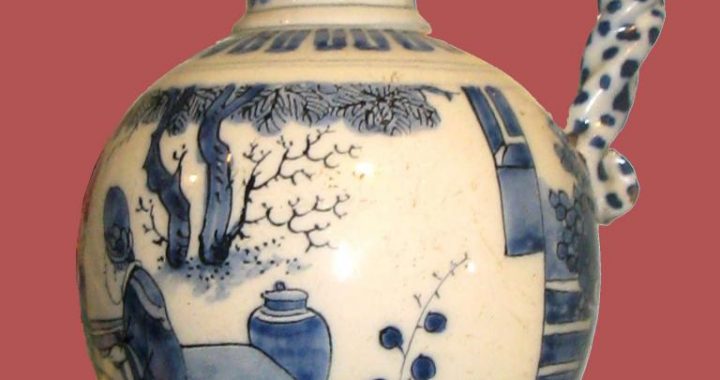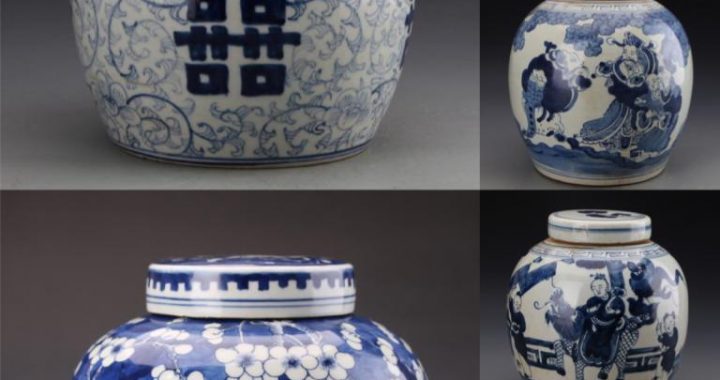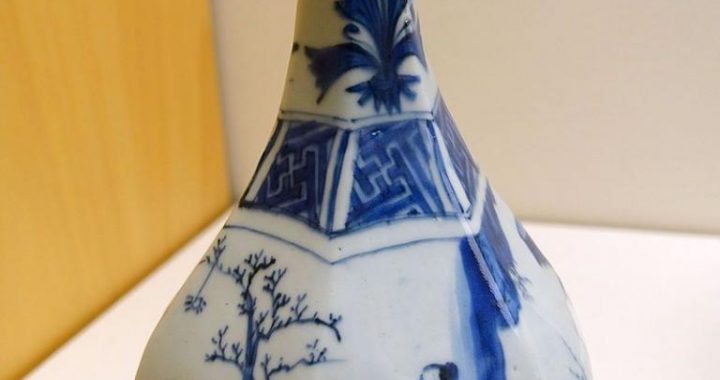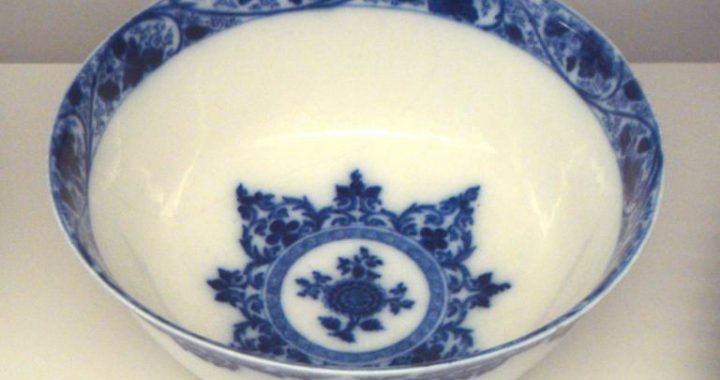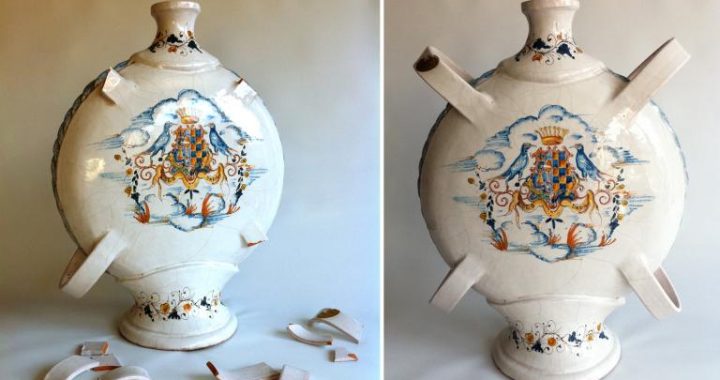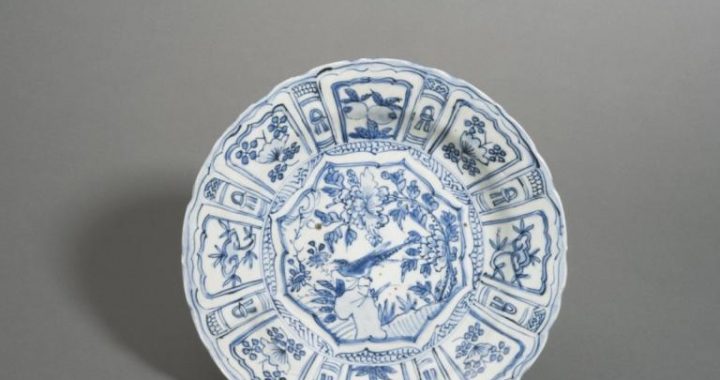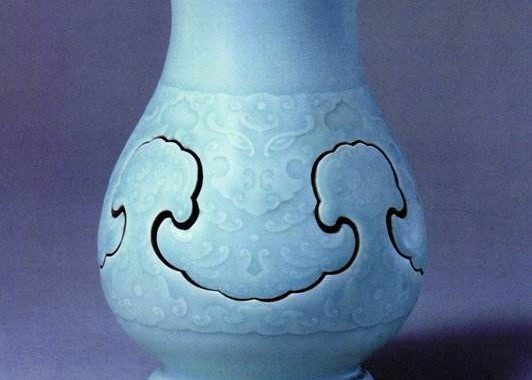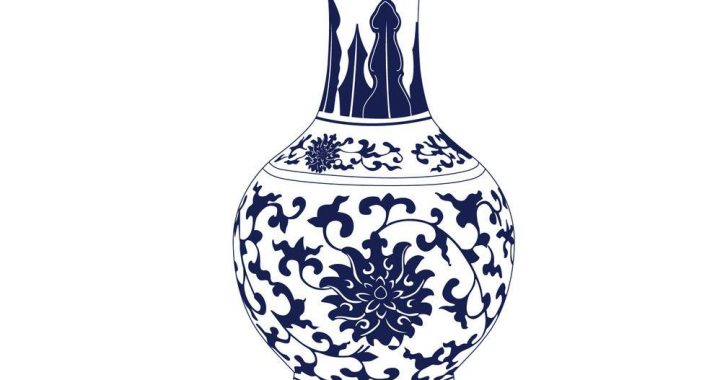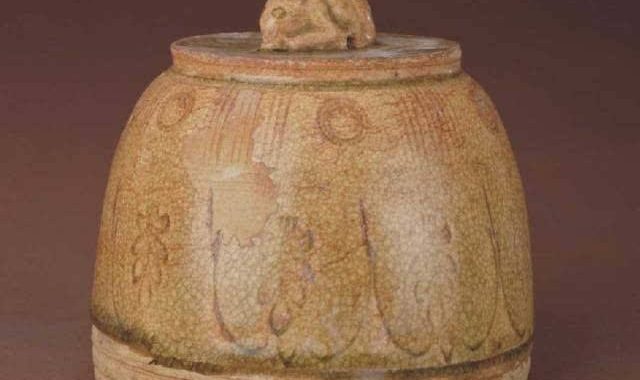Arts and Crafts during the Song, Liao, Jin and Yuan
7 min readAs the handicraft level of the Song Dynasty was rather high, obvious development was made in various aspects, such as the development of varieties, the scale of production, the technology of handicrafts, the management and trading. The administrative setups of government-run handicrafts were more unwieldy and the division of labor was more elaborate than the Tang Dynasty. Most of the artisans of the government-run handicrafts were recruited and had personal freedom to a certain extent while the management of the folk handicraft workshop was even more flexible and open. The commerce of the Song Dynasty was well developed, the urban economy became brisk day by day and handicrafts became commodity production universally. In Bianliang (the capital of the Northern Song Dynasty in the present Kaifeng, Henan) and Lin’ an(the capital of the Southern Song Dynasty in the present Hangzhou, Zhejiang) shops and stores stood in great numbers, gathering together almost all articles of daily use, and urban handicrafts were very flourishing. The scroll of the Qingming Shanghe Tu(Pure Brightness Day on the River) drawn by ZhangZeduan (1085-1145) of the Northern Song Dynasty showed the busy commercial activities in Bianliang city in a lively and visual representation. There was regular country fair on the outskirts of big cities like Chang’ an, Luoyang, Fuzhou, Quanzhou, Yangzhou and Chengdu. Gradually the rural fairs developed into market towns.
A porcelain pillow from the Dingyao Kiln of the Song Dynasty,a piece of rare ancient porcelain exquisitely made in the shape of a vivacious kid.
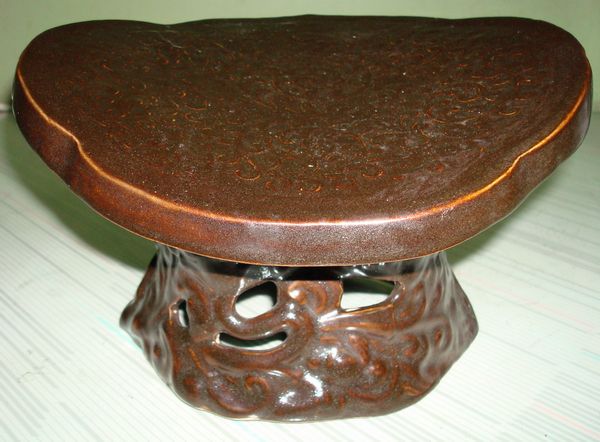
Three-foot xi(small vessel containing water for washing writing brushes) from the Ruyao Kiln in the Northern Song Dynasty, coated with smooth and lustrous cyan glaze both inside and outside.
Inscriptions on the bottom.
The Song Dynasty deserved the title of the”Porcelain Age”as porcelain was the most outstanding of all its handicrafts.Famous kilns were scattered from north to south.The Dingyao Kiln,Ruyao Kiln,Guanyao Kiln,Geyao Kiln and Junyao Kiln were known as the five famous kilns of the Song Dynasty.They created ceramic varieties with their respective characteristics,such as the white porcelain of the Dingyao Kiln,the celadon of the Ruyao Kiln,the light greenish blue porcelain of the Guanyao Kiln,the crackle porcelain of the Geyao Kiln,the transmutation porcelain of the Junyao Kiln and the shadowy blue porcelain of the Jingdezhenyao Kiln.In addition,the simple and straightforward porcelain fired by folk kilns like the Cizhouyao Kiln in the north and the Jizhouyao Kiln in the south was very popular among the people. The ceramic technology of the Song Dynasty achieved unprecedented prosperity by incorporating the great achievements of the successive dynasties. The dyeing and weaving technology of the Song Dynasty was also greatly developed. The varieties of silk weaving were plentiful and the center of silk weaving was in the regions south of the Yangtze River. For the production of lacquer ware, not only did the government have special administrative setups, the fabrication among folk people was also so common that local centers were formed. For the jade carving technique, as the “qiao se” (coincidental natural colors) on the jade was given full play to, gigantic achievements were obtained.
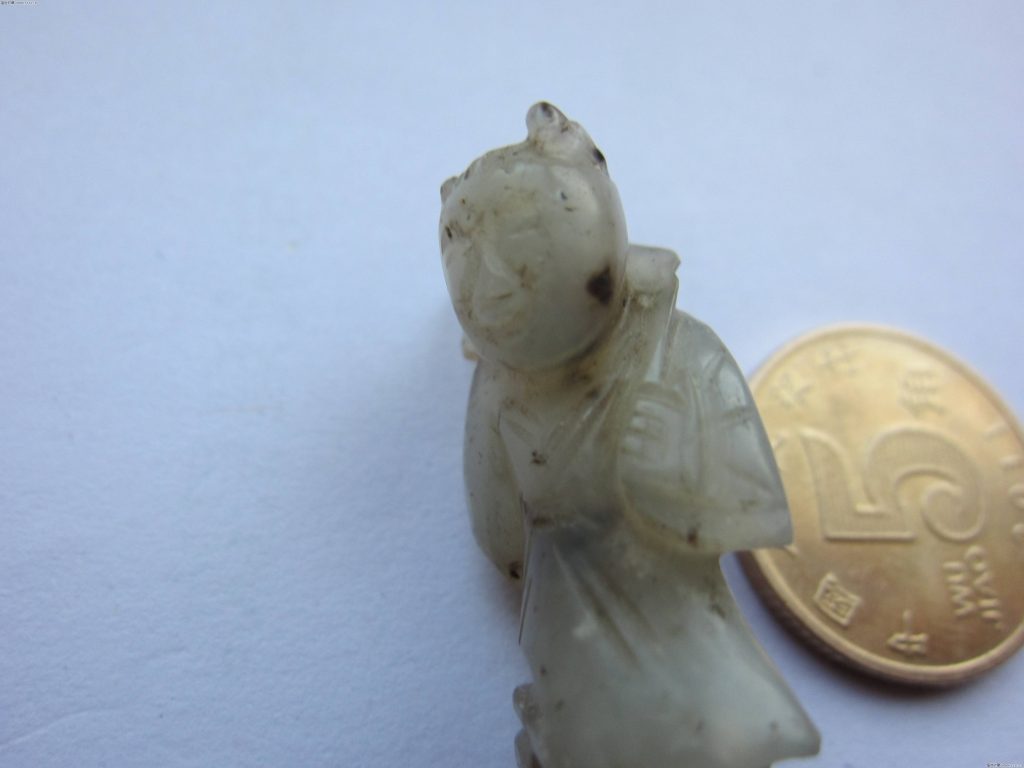
Jade ornament from the Jin Dynasty: flat in shape and partially purplish red.
Due to the popularity of the idealist philosophy in the Song Dynasty, the doctrine of “maintaining heavenly principles and restraining people’s desires”was greatlyemphasized. The technology of ceramics, lacquer ware, metalworking and furniture of the Song Dynasty all scored success with simple and unadorned shapes, having the style of refinement and amiableness with little overelaborate adornment. In the Song Dynasty, the establishment of imperial art academy system made drawing emphasized and intervened directed into the fabrication of industrial art. For instance, the handicrafts of embroidery and kesi silk were used to express drawing. They became handicraft articles mainly for enjoyment and affected greatly the later industrial art of the Ming Dynasty and the Qing Dynasty.
In 1127, the troops of the Jin Dynasty went southward and conquered Kaifeng.
The royal family of the Song Dynasty moved southward and made Hangzhou the capital, which was called the Southern Song Dynasty in the history. At the time ofmoving southward, the imperial court of the Song Dynasty also brought with it the production technologies and skilled craftsmen of the north to the south, bringing up the development of arts and crafts of the Southern Song Dynasty, particularly textile, printing and dyeing, shipbuilding, pottery, papermaking and printing. Besides, theoverseas trade of the Southern Song Dynasty also developed rapidly, which also helped to promote the development of handicrafts.
Jade ornament from the Jin Dynasty: flat in shape and partially purplish red.
Due to the popularity of the idealist philosophy in the Song Dynasty, the doctrine of “maintaining heavenly principles and restraining people’s desires”was greatlyemphasized. The technology of ceramics, lacquer ware, metalworking and furniture of the Song Dynasty all scored success with simple and unadorned shapes, having the style of refinement and amiableness with little overelaborate adornment. In the Song Dynasty, the establishment of imperial art academy system made drawing emphasized and intervened directed into the fabrication of industrial art. For instance, the handicrafts of embroidery and kesi silk were used to express drawing. They became handicraft articles mainly for enjoyment and affected greatly the later industrial art of the Ming Dynasty and the Qing Dynasty.
In 1127, the troops of the Jin Dynasty went southward and conquered Kaifeng.
The royal family of the Song Dynasty moved southward and made Hangzhou the capital, which was called the Southern Song Dynasty in the history. At the time ofmoving southward, the imperial court of the Song Dynasty also brought with it the production technologies and skilled craftsmen of the north to the south, bringing up the development of arts and crafts of the Southern Song Dynasty, particularly textile, printing and dyeing, shipbuilding, pottery, papermaking and printing. Besides, theoverseas trade of the Southern Song Dynasty also developed rapidly, which also helped to promote the development of handicrafts.
Carved blue-and-white underglaze red jar with lid from the Yuan Dynasty:simple and vigorous in shape and bright in gradation of decorative patterns.
During the period of the Song Dynasty and the Yuan Dynasty, the handicrafts of national minorities were affected by the culture and handicrafts of the Han nationality. They formed the handicraft production with their respective unique characteristics and obtained the achievements that attracted people’s attention, such as the Liao Porcelain, the gold vessel and silverware of the Liao Dynasty, the Jun Porcelain of the Jin Dynasty, the celadon and underglaze red of the Yuan Dynasty, and the dying and weaving of the Xixia Dynasty and the Yuan Dynasty. After founding itsstate, the Liao Dynasty developed porcelain industry by setting up an official post specially taking care of kiln business, mainly copying the porcelain system of the Dingyao Kiln and its variety was typically represented by cockscomb pot resembling leather bag. In the later stage of the Jin Dynasty, new creation occurred in the respect of ceramic technology, particularly the Jun Porcelain initiating the decorative porcelain with red spots in cyan glaze. Of all the handicrafts in the Xixia Dynasty, fur handicraft was the most developed.
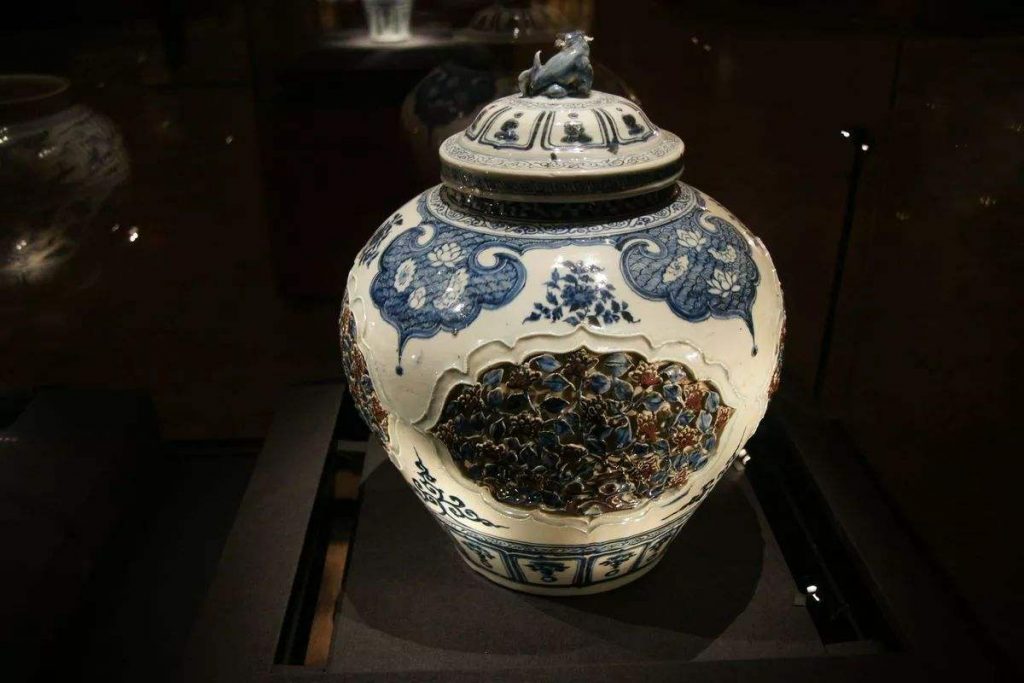
A gilded silver cockscomb pot from the Liao Dynasty, typically shaped like Khitan nationality’s leather bag, its adornment skill and line patterns obviously affected by the inland traditional handicraft.
Lacquer plate with gardenia patterns by Zhang Cheng of the Yuan Dynasty.
The handicraft of the Yuan Dynasty suffered serious damage during its ceaseless expedition. However, the Yuan Dynasty paid great attention to recruit artisans from the prisoners of war to meet the needs in military affairs and daily life. Those artisans making weaponry were put in “military artisan”establishment while the artisans of other handicrafts were called “civil artisans.”The status of artisans was hereditary,engaging in productive labor under surveillance.
Of all the handicrafts in the Yuan Dynasty, the achievement made in dyeing and weaving handicraft was the most important.A technique weaving gold filament in silkfabrics was the unique feature of the Yuan Dynasty, represented by a kind of brocade woven with gold filament in silk fabrics called “nashishi.”It was woven mainly to meet the enjoyment of nobles but also for granting a reward. In this field, the technique ofthe artisans of the Hui nationality was the best. In the Yuan Dynasty, the technique ofcotton weaving was also universally developed. Cotton fabrics, excellent in quality and reasonable in price, replaced traditional fabric of bast fibers and became very popular.
Huang Daopo of Songjiang, Jiangsu(now under the jurisdiction of Shanghai), made great contributions to promoting the advanced technique of cotton spinning and weaving.
Rulers of the Yuan Dynasty were intrepid and valiant. In the nomadic life, their life style of eating and drinking with enthusiasm formed the style of straightforwardness, unconstraint, and sturdiness in the handicrafts of the Yuan Dynasty. Their thick and heavy, crude and large ceramic household utensils and splendid and impressive-looking silk fabrics were the typical expression of their style. The Yuan Dynasty also paid great attention to the dissemination of different religions, of which Buddhism and Taoism prevailed. In various kinds of handicrafts, religion was the subject frequently seen. The expansion of domain and development of traffic in the Yuan Dynasty made frequent the contacts among the various nationalities at home and the exchanges with other countries, which promoted the dissemination and development of industrial arts as well as the absorption and compromise of the styles of foreign lands.
